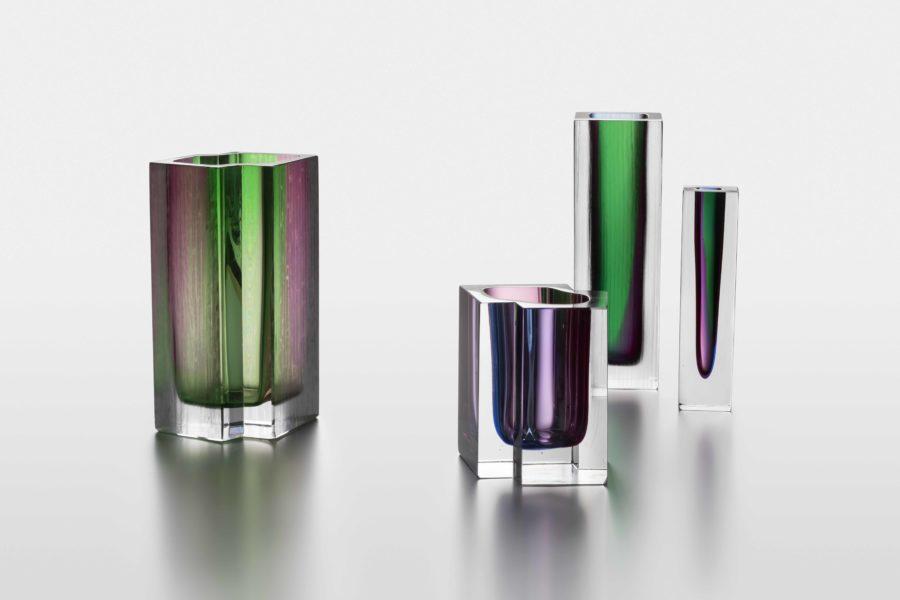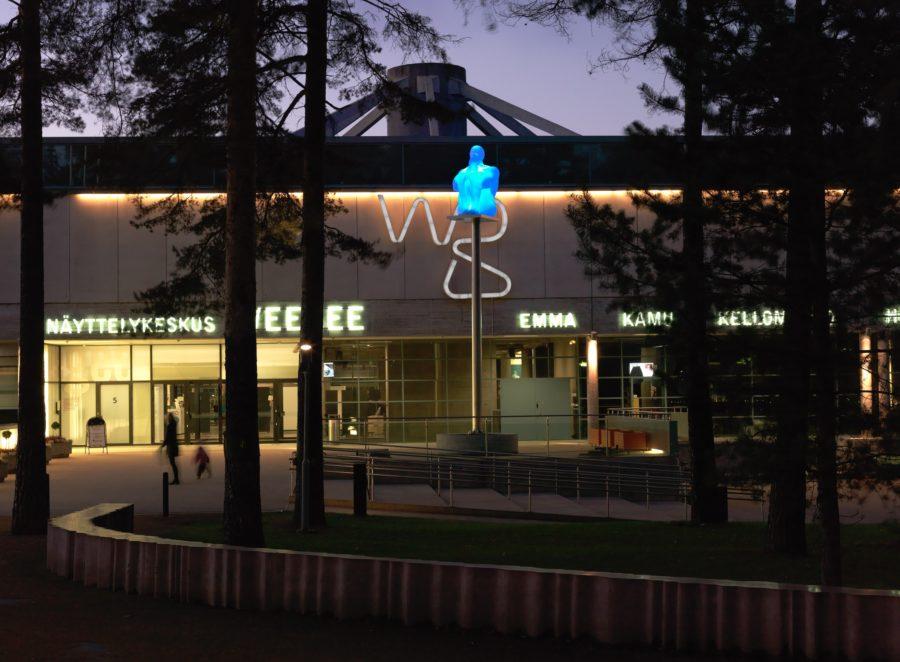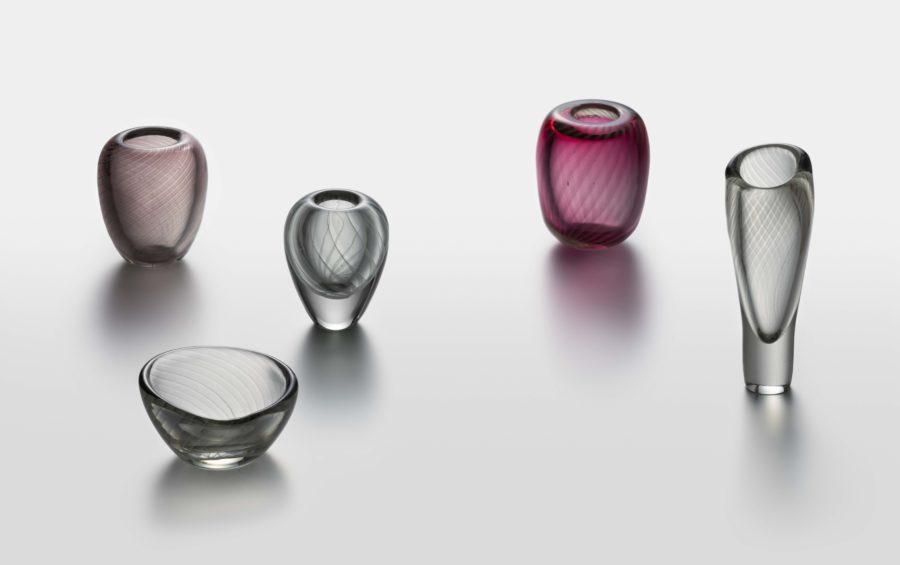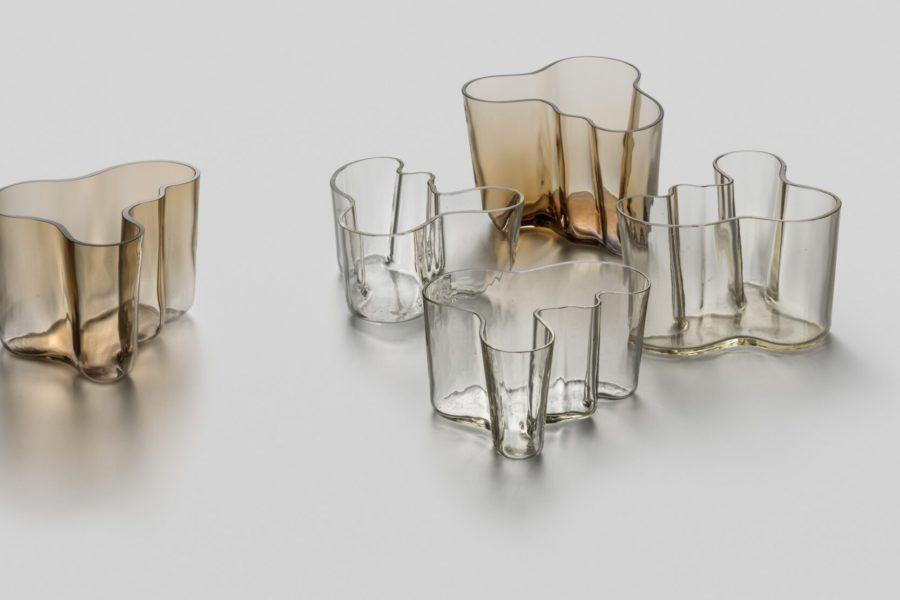Espoo’s EMMA art museum showcases a unique collection of exquisite Finnish glass and ceramics
 Photography by Rauno Träskelin featuring Helena Tynell, Vases from Series Polar, 1959. Collection Kakkonen / EMMA – Espoo Museum of Modern Art
Photography by Rauno Träskelin featuring Helena Tynell, Vases from Series Polar, 1959. Collection Kakkonen / EMMA – Espoo Museum of Modern Art
Words by Dorothea Gundtoft
From Denmark to Sweden to Norway, design enthusiasts will be familiar with most of the Nordics’ iconic designers – Arne Jacobsen, Greta Grossman and Torbjørn Afdal to name just a few.
When it comes to neighbouring Finland, however, the country’s renowned yet lesser-known designs are waiting to be discovered. Although Finland’s celebrated Marimekko print and acclaimed architect Alvar Aalto are recognised internationally, this Nordic nation also has an acknowledged yet perhaps uncharted history of extraordinary post-industrial glassware.
Finland became independent from Russia and Sweden in 1917. Marking the start of an artistic upheaval, the country’s newly found independence spurred on a collective of artists to develop a new Finnish nationalistic style inspired by the surrounding nature.
 Photography by Ari Karttunen featuring EMMA exhibition centre WeeGee
Photography by Ari Karttunen featuring EMMA exhibition centre WeeGee
The result was a well-crafted design exhibition in Stockholm in 1930, which presented the first pieces of glassworks and ceramics by the now acclaimed design brands Iittala and Arabia. However, it wasn’t until the 1950s that the Finnish Society of Crafts and Design created a Finnish section at the Milan Triennale which helped establish Finnish design internationally.
Today, an extraordinary heritage collection of Finnish glassware and ceramics has finally been gathered together and presented in Espoo, a city just outside of Helsinki, at EMMA – the Espoo Museum of Modern Art.
This collection wouldn’t be possible without the passionate private collector Kyösti Kakkonen, who invested large parts of his accumulated wealth in securing rare Finnish glassware and ceramics. The Kakkonen collection has been brought together over the course of 35 years, with Kakkonen himself saying that he was looking for something meaningful to collect, seeing as there were already many art collectors in the 1980s.
 Photography by Rauno Träskelin featuring Toini Muona, Hay (Vases), 1940s-1950s. Collection Kakkonen / EMMA – Espoo Museum of Modern Art
Photography by Rauno Träskelin featuring Toini Muona, Hay (Vases), 1940s-1950s. Collection Kakkonen / EMMA – Espoo Museum of Modern Art
Kakkonen’s love affair with Finnish design started in 1988 after the death of Finnish ceramist Toini Muona, when he had the opportunity to acquire her entire surviving oeuvre. After that, he began collecting well-known, established and internationally recognised figures of Finnish design: first through ceramics, then glass – both interests sparked by chance and opportunity.
Kakkonen’s private collection now incorporates more than 10,000 objects – a catalogue of magnificent heritage pieces that were difficult to choose from, as the curator at EMMA, Aura Vilkuna, explains.
‘In addition to internationally recognised names, we wanted to highlight those who had been forgotten, as well as the collection’s new and interesting artists. During the exhibition project we visited both Kakkonen’s villa in Joensuu, North Karelia, and his apartment in Helsinki to get a full sense of the collection and catalogue it. The selection is curated with the exhibition and its future in mind.’
 Photography by Rauno Träskelin featuring Gunnel Nyman. Collection Kakkonen / EMMA – Espoo Museum of Modern Art
Photography by Rauno Träskelin featuring Gunnel Nyman. Collection Kakkonen / EMMA – Espoo Museum of Modern Art
As well as the story of the collection to which the space is dedicated, the design pays tribute to the concrete, brutalist architecture of Aarno Ruusuvuori, who designed the building occupied by EMMA, originally a printing house, between 1964 and 1974. Ruusuvuori was a modernist and one of the best-known names in Finnish architecture from the 1960s to the 1980s.
The interior and plans were made in collaboration with Helsinki-based design agency Aivan, and the concrete that dominates is accompanied by Finnish wood to bring softness and warmth.
‘Concerning Finnish Golden Age design, Kakkonen has strived to collect every significant piece, but when it comes to contemporary artists, he admits personal taste might affect some of his acquisitions. He has spent a great deal of time and assets on this collection, even having his own chief curator, Juhani Kukkonen,’ Vilkuna explains.
 Photography by Rauno Träskelin featuring Alvar Aalto, Savoy (Vases), 1937. Collection Kakkonen / EMMA – Espoo Museum of Modern Art
Photography by Rauno Träskelin featuring Alvar Aalto, Savoy (Vases), 1937. Collection Kakkonen / EMMA – Espoo Museum of Modern Art
The collection brings together elements of modernism and nature – as the origin of the materials these works are made from are a source of inspiration for their makers.
For Kakkonen, collecting has not only been an interest, but his life’s work: something he wants to be remembered for.
Read more in ICON 210: The Finland Issue or get a curated collection of architecture and design news like this in your inbox by signing up to our ICON Weekly newsletter

















